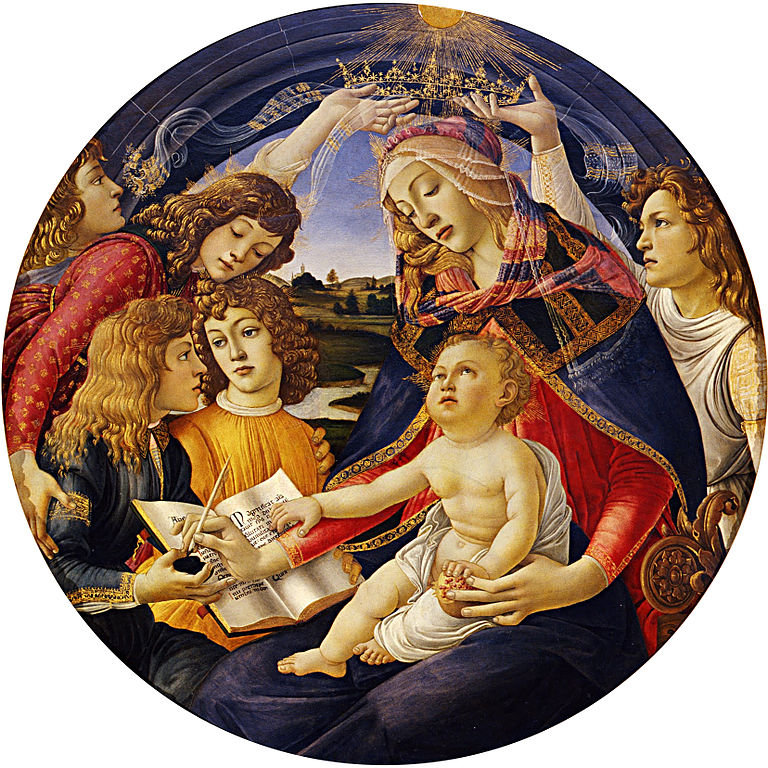Answered by Legionary of Christ Father Edward McNamara, professor of liturgy and sacramental theology and director of the Sacerdos Institute at the Regina Apostolorum university.
Q: Can I replace the Magnificat at vespers with another Marian hymn like «Hail! Queen of Heaven»? — E.A., Palo, Leyte, Philippines
A: A very simple answer is no and under no circumstances whatsoever.
The three Gospel canticles found in the Liturgy of the Hours (Benedictus, Magnificat and Nunc Dimittis) are an integral part of the Divine Office and cannot be replaced by any other texts. Indeed, they are practically the only texts taken from the Gospels habitually used in the office and hence cannot even be replaced by other psalms and canticles.
Historically their presence in the office stems from the earliest times, although only later, after the ninth century, did these canticles become, so to speak, the central ritual moment of the hours of lauds and vespers. Thus they received special liturgical honors such as being sung while standing and from the 12th century the altar, clergy in choir and people have been incensed while singing the Benedictus and Magnificat. These practices continue today.
The General Instruction on the Liturgy of the Hours says the following:
“50. A Gospel canticle is then solemnly recited with its antiphon; at Lauds, it is the Benedictus, the Canticle of Zechariah; at Vespers the Magnificat, the Canticle of the Blessed Virgin Mary. These canticles express praise and thanksgiving for our redemption and have been in popular use for centuries in the Roman Church. The antiphons for the Benedictus and the Magnificat vary according to the liturgical day, season or feast….
“119. The antiphons at the Benedictus and the Magnificat, in the Seasonal Office, are taken from the Proper of the Season if there are any, otherwise from the current psalter. On solemnities and feasts, they are taken from the Proper, otherwise from the Common. On memorials that do not have a proper antiphon, the antiphon may be said either from the Common or from the current ferial day….
“138. The Gospel canticles, the Benedictus, the Magnificat, and the Nunc dimittis, should be accorded the same solemnity and dignity as is usual for the hearing of the Gospel.”
From these norms, it should be clear why no other composition can replace these Gospel texts in the Divine Office.
However, with respect to the hymns in the hours the instruction says the following:
“X The Hymns and other Non-Biblical Songs
“173. Hymns have a place in the Office from very early times, a position they continue to retain. Not only does their lyrical nature make them especially suited to the praise of God, but they constitute a popular part since nearly always they point more immediately than the other parts of the Office to the individual characteristics of the Hours or of each feast. They help to move the people taking part and draw them into the celebration. Their literary beauty often increases their effectiveness. In the Office, the hymns are the principal poetic part composed by the Church.
“174. The hymn is traditionally concluded by a doxology, which is usually addressed to the same divine person as the hymn itself.
“175. For the sake of variety in the Office for the ordinary time of the year, there are two series of hymns for each Hour, to be used on alternate weeks.
“176. In the Office of Readings, there are two series of hymns for the ordinary time of the year, depending on whether this Office is recited at night or during the day.
“177. New hymns can be given melodies of the same rhythm and meter as the traditional ones.
“178. With regard to celebrations in the vernacular, Episcopal Conferences may adapt the Latin hymns to the nature of their own language. They may also introduce new compositions, provided they suit the spirit of the Hour, season or feast; one should constantly beware of permitting those popular songs which are of no artistic value and completely unworthy of the liturgy.”
* * *
Follow-up: Solitary Exposition of Blessed Sacrament
Pursuant to a commentary on our November 12 piece on exposition, a reader pointed out a possible error on my part. To wit:
“In your article, you said: ‘Before the conciliar reform priests could open the tabernacle for simple adoration with the closed ciborium as a means of personal devotion. Although this possibility has not been formally abrogated, it is quite rare in current practice.’ However, I found the reply from the dicastery in the 19th century which indicated a priest might not open the tabernacle for his own devotion. Here is the reference to the reply from SRC: Decreta authentica SRC, n. 3832, in volume 3 published in 1900, page 372. I wonder was there an alternative indication from the Holy See on the matter?”
This prompted me to revise my sources and, effectively, I had misread a norm regarding private exposition with the pyx, which did not require particular permission, with the theme of the solitary adoration by the priest which, as our reader point out, had been expressly forbidden.
The official decree from the Congregation of Rites said: “Dublium II. An liceat Sacerdoti pro sua privata devotione sacrum Tabernaculum aperire pro adorando Sacramento, precibus ad libitum fundensi ac postea illud claudere? […] Ad. II. ‘Negative.’” In my sources from the early 1960s this norm was still considered in force.
I thank our reader for his attention to detail on this matter which will be corrected in the online version of the reply.
* * *
Readers may send questions to zenit.liturgy@gmail.com. Please put the word «Liturgy» in the subject field. The text should include your initials, your city, and your state, province or country. Father McNamara can only answer a small selection of the great number of questions that arrive.



